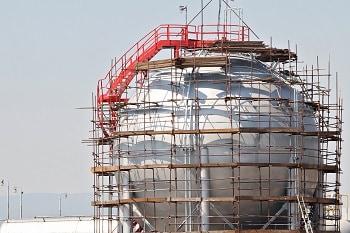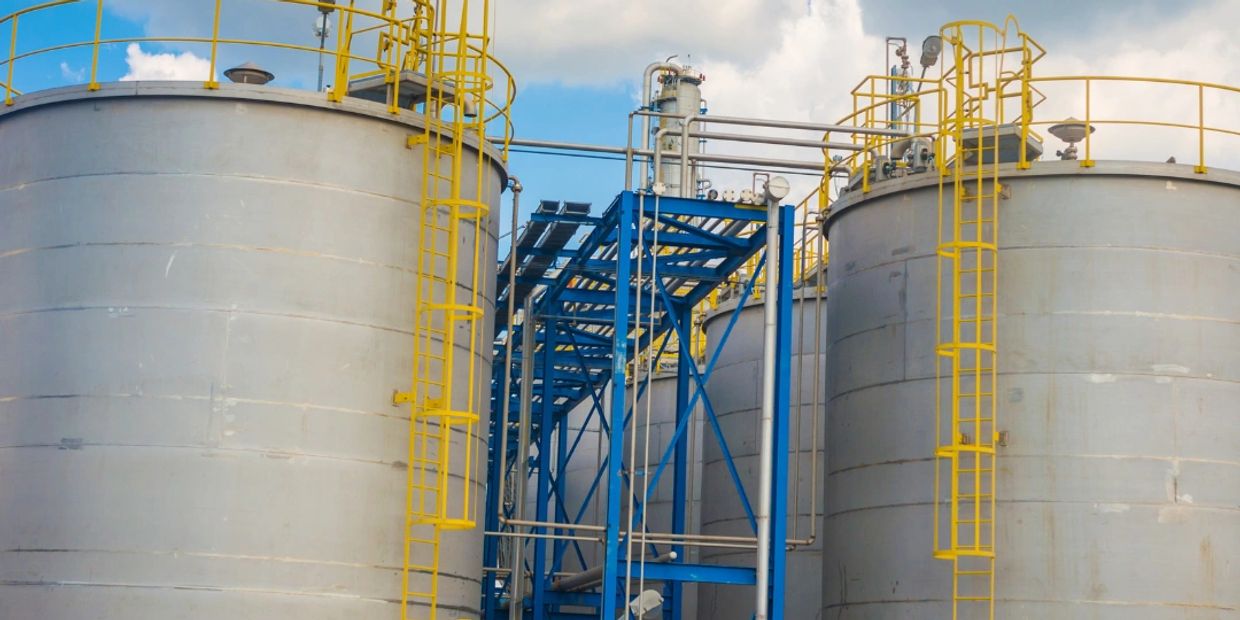The Necessary Role of Container Welding Assessment in Ensuring Structural Honesty and Security Conformity in Industrial Applications
In the realm of commercial applications, container welding examination arises as an essential component in protecting architectural stability and making sure conformity with safety and security laws. Making use of a mix of strategies such as aesthetic evaluations and advanced screening approaches, these assessments offer to recognize and minimize possible problems prior to they intensify right into significant threats.
Significance of Storage Tank Welding Evaluation

Making certain compliance with market criteria and policies is another substantial aspect of container welding inspection. Regulatory bodies mandate strict guidelines for the building and construction and upkeep of tank, and extensive evaluations assist companies stick to these requirements. Non-compliance can cause serious charges, including penalties and closures, even more emphasizing the need for rigorous examination protocols.
In addition, storage tank welding assessment plays a vital role in keeping functional performance. Normal analyses can recognize potential issues before they rise, helping with prompt repair work and reducing downtime. This aggressive technique not only improves security however likewise adds to cost savings in the future. In summary, the relevance of container welding examination hinges on its capacity to protect public wellness, shield the environment, and guarantee compliance with governing structures.
Key Assessment Strategies
Reliable container welding examination depends on a selection of vital strategies that make certain detailed evaluation of weld high quality and architectural honesty. Amongst one of the most prevalent strategies are visual assessment, ultrasonic testing, radiographic screening, and magnetic bit screening - Tank Welding Inspection. Each method supplies unique advantages in assessing different facets of the weld
Aesthetic evaluation acts as the initial line of defense, permitting inspectors to identify surface issues, abnormalities, or inconsistencies in the weld grain. Ultrasonic screening employs high-frequency acoustic waves to identify internal flaws, such as fractures or voids, providing a comprehensive evaluation of weld integrity. This technique is specifically effective in identifying problems that might not be noticeable on the surface.
Radiographic testing utilizes X-rays or gamma rays to create photos of the welds, exposing interior stoppages and offering a permanent record for future referral. This technique is extremely effective for important applications where the danger of failure must be minimized.
Finally, magnetic particle screening is employed to identify surface area and near-surface issues in ferromagnetic products. By using electromagnetic fields and great iron particles, assessors can pinpoint gaps that might endanger the architectural integrity of the container. Together, these techniques create a robust framework for making sure high-quality welds in commercial applications.
Conformity With Safety And Security Criteria

Normal inspections play a crucial function in making certain conformity by identifying prospective failings or discrepancies from suggested criteria. Inspectors are educated to review weld quality, validate material requirements, and examine the overall structural honesty of tanks. Their knowledge is crucial in ensuring that welding processes satisfy the needed security standards.
In addition, compliance with security criteria not just protects employees but additionally safeguards the environment from possible dangers such as leakages or tragic failures. Organizations that prioritize safety conformity are much better placed to minimize risks, improve operational performance, and promote a society of security within their workforce. In recap, keeping rigorous compliance with safety and security standards is indispensable for the successful operation of container welding activities in commercial setups.
Benefits of Normal Assessments
Routine assessments are integral to maintaining the structural integrity and safety of welded storage tanks. These examinations supply a systematic technique to identifying prospective issues or weak points in the welds, making sure that any kind of concerns are resolved before they intensify right into considerable failings. By conducting routine assessments, organizations can discover deterioration, tiredness, and various other kinds of damage that may compromise storage tank performance.
Additionally, consistent inspections contribute to compliance with market laws and requirements. Sticking to these guidelines not just mitigates legal risks but also enhances the company's reputation for security and reliability. Routine assessments promote an aggressive security culture, encouraging employees to recognize and focus on the value of equipment stability.

Case Researches and Real-World Applications
Case studies and real-world applications illustrate the substantial effect of efficient tank welding evaluation methods. Complying with the application of strenuous welding inspection protocols, including aesthetic and ultrasonic screening, the best site center determined crucial problems in weld seams that can have led to devastating failures.
In a similar way, a water treatment plant applied an extensive inspection program for its container welding procedures - Tank Welding Inspection. By incorporating non-destructive testing methods, the plant was able to identify very early indications of deterioration and tiredness in weld joints. This prompt treatment extended the lifespan of the tanks and made sure conformity with safety guidelines, hence guarding public health
These instance researches highlight the relevance of routine and organized tank welding assessments. By prioritizing these practices, industries can mitigate threats, enhance structural integrity, and make sure compliance with safety criteria, ultimately leading to boosted operational performance and minimized liabilities.

Verdict
Finally, storage tank welding examination is an indispensable part of preserving architectural stability and safety in commercial applications. Utilizing various assessment techniques makes certain early detection of prospective problems, thus protecting against catastrophic failures. Adherence to safety standards further improves operational dependability and compliance with governing needs. Eventually, normal assessments not just shield public wellness and the environment yet also add to the durability and performance of critical possessions, underscoring the essential function of this method in commercial procedures.